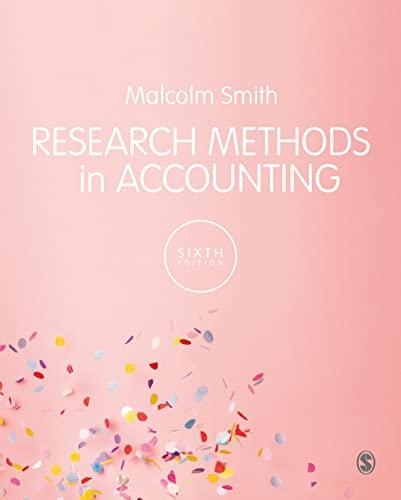Answered step by step
Verified Expert Solution
Question
1 Approved Answer
elp Search Selected data from the financial statements of a proprietorship: 2019 Income statement Total revenues [1] Total expenses..... 105,000 Profit 68,000 2019 Statement of




elp Search Selected data from the financial statements of a proprietorship: 2019 Income statement Total revenues [1] Total expenses..... 105,000 Profit 68,000 2019 Statement of Owner's Equity Owner's capital, Jan. 1............ 89,000 Owner investment in the business. [2] Net income 68,000 Owner's drawings 35,000 Owner's capital, Dec. 31 147,000 2019 Balance Sheet Total assets 395,000 Total liabilities [3] Instructions: Determine the missing amounts based on the information provided above. Part A: Solve for Total Revenues Total revenues (number without a comma, e.g. 15000): Instructions: Determine the missing amounts based on the information provided above. Part A: Solve for Total Revenues Total revenues (number without a comma, e.g. 15000): Part B: Solve for Owner's investment in business Owner's investment in business (number without a comma, e.g. 15000): Part C: Solve for Total Liabilities Total Liabilities (number without a comma, e.g. 15000): Equipment was purchased for the cost of $86,590. The equipment was purchased on March 1. The company's fiscal year end is September 30. The equipment is estimated to have a six-year life and a $5,450 residual value. The straight-line depreciation method is used for the asset. 1. Depreciation expense for the current year (nearest dollar without comma, e.g. 15000): 2. Depreciation expense for the next year (nearest dollar without comma, e.g. 15000): 3. Equipment's carrying amount, next year ending balance sheet (nearest dollar without comma, e.g. 15000): ( Equipment was purchased for the cost of $142,300. The equipment was purchased on March 1. The company's fiscal year end is October 31. The equipment is estimated to have a five-year life and a $7,635 residual value. The diminishing balance method, the straight-line rate, is used is used to depreciate the asset. 1. Depreciation expense for the current year (nearest dollar without comma, e.g. 15000): 2. Depreciation expense for the next year (nearest dollar without comma, e.g. 15000): 3. Equipment's carrying amount, next year ending balance sheet (nearest dollar without comma, e.g. 15000)
Step by Step Solution
There are 3 Steps involved in it
Step: 1

Get Instant Access to Expert-Tailored Solutions
See step-by-step solutions with expert insights and AI powered tools for academic success
Step: 2

Step: 3

Ace Your Homework with AI
Get the answers you need in no time with our AI-driven, step-by-step assistance
Get Started


